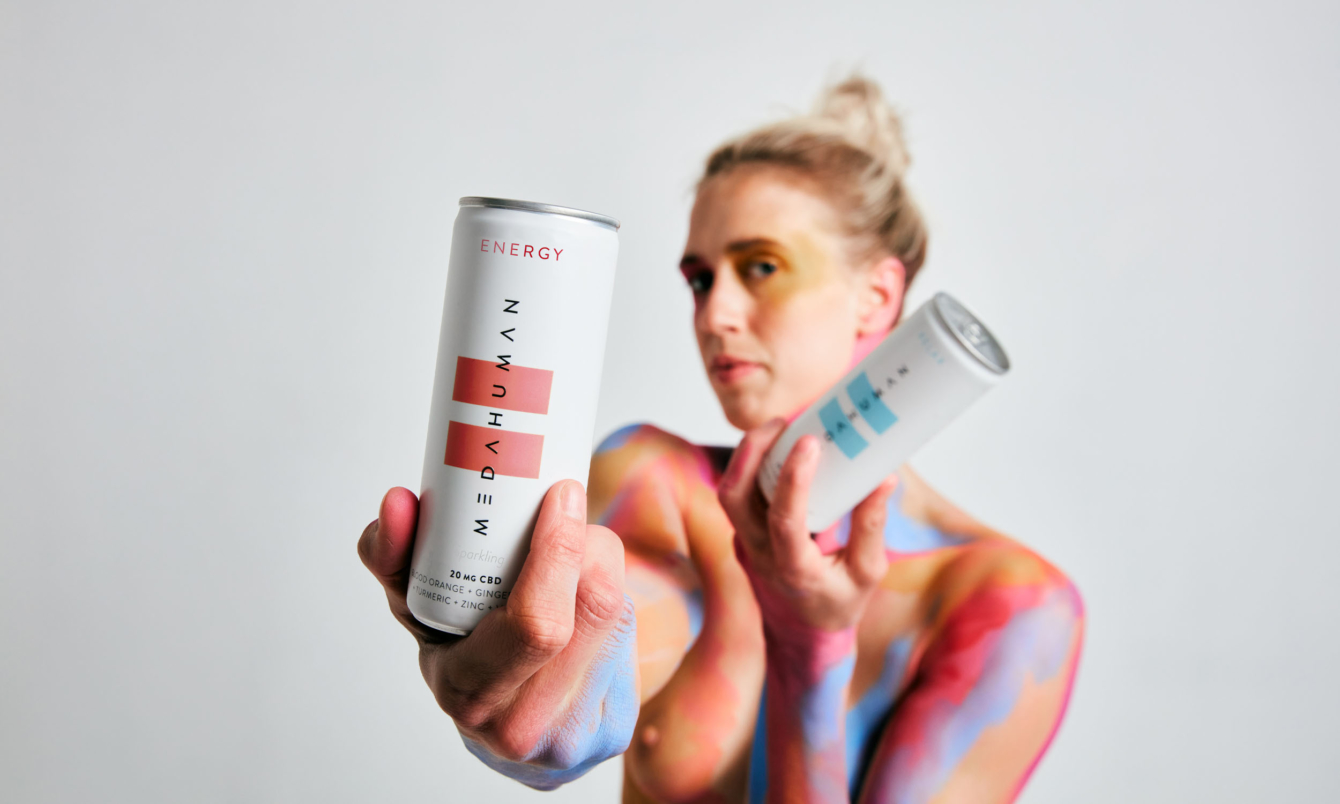
WHAT IS NATURAL MEDICINE?
Natural medicine, also known as naturopathy, is a form of alternative medicine which can involve a combination of homeopathy, herbalism, acupuncture, diet and lifestyle adaptations.
And it’s not a new concept! Natural medicine’s founding principles were discovered by the Greek philosopher Hippocrates and they originate all the way back to 400BC! The original ideology behind natural medicine, stems from vitalism and self-healing, with natural medicine practitioners aiming to use gentle therapeutic protocols and techniques which involve the mind, body and emotions to aid the healing process.
HOW DOES IT WORK?
Each person is treated as an individual, unique case, where practitioners will focus on treating the whole person, rather than focusing on one area of the patient’s problems.
Naturopaths believe each system in the body is interconnected, and aim to align all structures of the body so that it can function optimally and support its own self-healing. They may also avoid the use of methods that may suppress symptoms, as the main aim is to get to the root problem, so the body can fully restore and heal itself.
Another important principle of naturopathic medicine is to focus on the prevention of poor health and disease. Depending on the patient’s main areas of concern and symptoms, the treatment methods can vary and may involve multiple methods focusing on:
- Dietary advice
- Lifestyle advice to promote overall health and eliminate stress
- Herbal medication to reduce and prevent symptoms
- Massage therapy to relieve tension and promote optimal well-being
- Hydrotherapy as it is believed water is vital when it comes to stimulating the body’s immune system
- Meditation as a form of stress relief and management
WHO PRACTISES NATURAL MEDICINE?
Individuals who practise natural medicine are known as naturopaths and can include naturopathic nutritionists and naturopathic doctors.
Different types of naturopathic practitioners can include:
- Naturopathic nutritionist
- Osteopath
- Ayurvedic doctor
- Naturopathic doctor
- Herbalist
- Traditional chinese medicine practitioner
BENEFITS OF NATURAL MEDICINE
A naturopath has the vision of looking after your health, not just right now, but long into the future. As mentioned, it’s not just about treating the symptoms but getting to the deeper root cause.
Common conditions such as headaches, tiredness, fatigue, depression, insomnia, weight fluctuations, acne, arthritis, gut problems and more, have all stemmed from not getting to the root cause, often years prior to being diagnosed with these conditions.
The modern, 2022 idea of taking a painkiller to give a temporary fix will not help the problem. Therefore working with a naturopath looks at the whole picture, aiming to improve your health now and right through to the future, really focusing on longevity.
CONDITIONS IT MAY WORK FOR
According to a 2020 survey, the most popular patient conditions when working with naturopathic doctors included improvements in digestion, nutrition and mental health. (1)
Some of the most common health conditions treated by naturopathic practises include:
- Digestion
- Food allergies and sensitivities
- Fatigue
- Sleep difficulties
- Stress
- Anxiety
- Depression
- Hormonal imbalances
- Skin conditions such as eczema and acne
SHOULD I TRY NATURAL MEDICINE?
Natural medicine and its approaches can offer relief for a whole host of conditions and symptoms but holistic medicine is not a replacement for traditional medical care- it may be worth consulting with a traditional doctor before trying out holistic treatments, especially if you are taking prescription medications. This will be sure you get the safest care possible when starting on your natural medicine journey.
https://www.healthypeople.gov/2020/about/foundation-health-measures/Determinants-of-Health (1)

Deep dive into the benefits of the new Energy drink Energy: Cranberry and Lime flavour + Ginseng +Vitamin B & C + natural caffeine + 20mg CBD.
Feel your lacking energy on a regular basis? Well it’s actually extremely common, with around ⅓ of healthy adults reporting feeling fatigued or lacking energy on the reg.(1)
There are many factors that can impact our energy levels: chronic health conditions, a lack of sleep, nutrient deficiencies, over or under-exercising, and a poor diet. MEDAHUMANS latest Energy drink packs in all you need to feel and perform your best! Containing only the finest, all-natural, energy-boosting ingredients. Read on below to find out how it’ll give you the energy kick you’ve been craving.
Cranberry and lime – Cranberries and limes are a source of several vitamins and minerals, especially vitamin C. Vitamin C can help the immune system to produce more immune cells, whilst improving the cells’ ability to fight off microbes and protect the body against disease. In addition to it being a super tasty zesty combo that will leave you wanting more!
Ginseng- Studies have indicated that Ginseng may help fight fatigue and promote energy. Various studies have linked certain compounds in ginseng, such as polysaccharides and oligopeptides, with lower oxidative stress and higher energy production in cells, which could help to fight fatigue. (2) Another review found that ginseng may also help to enhance physical activity (3). So why not try swapping out your pre-workout coffee for MEDA HUMANS energy drink to gain more from your workout.
Vitamin B– B vitamins are known for their role in energy production, especially B12, which helps to transform the food we eat into energy that our cells can use. B12 can also help keep our nerve and blood cells healthy, preventing anemia that can result in us feeling weak and tired.
Vitamin C– We all feel tired or fatigued after a long day at work, but if yours is constant it could be telling you that your body is struggling to convert your energy into action. If you live a healthy lifestyle with a well-balanced diet, and still feel exhausted it could be a deficiency or low levels of a number of vitamins, one of them is Vitamin C.
Vitamin C assists many different bodily functions to work, and when we run low, it can have an effect on our immunity, aging, collagen production, and wound healing. Studies have shown a link between reduced tiredness and fatigue with an adequate intake of vitamin C levels- so ensure you keep yours topped up to feel your best. (5)
Caffeine- Caffeine, the stimulant many of us rely on for our energy, is actually found naturally in herbs, coffee beans, and cacao (think chocolate!). Many studies have shown that coffee can improve various parts of brain function, including memory, vigilance, energy levels, mood, reaction times, and general brain functioning. (6)
CBD- may help to promote deeper and easier sleep, which in turn can help to support energy levels. Limited studies have suggested that CBD may also have the ability to improve focus, with feelings of tiredness often being related to a lack of mental clarity. (8)
Overall, each of the above ingredients when combined will give you a rush of vitamins and minerals you need to not only perform at your best but to feel your best from the inside out.
https://www.sciencedirect.com/science/article/abs/pii/009174358690037X (1)
https://pubmed.ncbi.nlm.nih.gov/27983571/ (2)
https://pubmed.ncbi.nlm.nih.gov/27822924/ (3)
https://www.ncbi.nlm.nih.gov/pmc/articles/PMC2885294/ (4)
https://efsa.onlinelibrary.wiley.com/doi/pdf/10.2903/j.efsa.2010.1815 (5)
https://onlinelibrary.wiley.com/doi/full/10.1111/j.1467-3010.2007.00665.x (6)
https://pubmed.ncbi.nlm.nih.gov/21949167/ (7)
https://jcannabisresearch.biomedcentral.com/articles/10.1186/s42238-019-0012-y (8)

Climate change can be overwhelming, and while significant changes will require action on a global scale, there are small choices we can all make in our daily lives to lessen our personal impact on the environment.
Lowering carbon footprint at a personal level can range from changing our travel habits to tweaking our lifestyle choices such as the food and clothing we decide to buy. A great place to start is with your diet. Research suggests that swapping from a western diet to more sustainable eating patterns could cut greenhouse gas emissions by 70%! (1)
Less Waste
Food that is thrown away is left to decompose in landfills, and can release methane, a potent greenhouse gas (5). Over the past 100 years, methane has been shown to have 34 times the impact on global warming as carbon dioxide! (4). Reducing your food waste is one of the easiest ways to help reduce carbon footprint. Try to plan meals, find some zero waste recipes, use the freezer, save leftovers and only buy or order what you need.
Eat Less Meat
Research has indicated that reducing meat consumption may be one of the most effective ways to lower personal carbon footprint. The emissions from livestock production, especially beef and dairy, actually make up for 14.5% of the worldwide human-induced greenhouse gas emissions (2). Red meat is reported to have up to 100 times more of an environmental impact than plant based foods (6). Trying to limit animal food consumption, especially meat and dairy, to one meal a day, and joining in on “Meat free Mondays” is a great place to start.
Choose Plant Based
Opting for plant based options is a great way to cut down on your greenhouse gas emissions and boost your nutrient intake. Start by choosing foods lower down the food chain. Try filling your plate with veggies, fruits, grains and beans.
Fibre Rich Foods
Consuming more fibre rich foods may improve your carbon footprint in addition to your health. A study on 16,800 American individuals displayed that diets lowest in greenhouse gas emissions were also high in fibre rich plant foods (2). In addition to helping the planet, adding fibre to your diet can also support your gut and digestive health. (3) Fibre is found in wholegrains, fruits and veg, nuts and seeds and pulses.
Shop Local
Supporting local green grocers and farmers markets is the perfect way to reduce your carbon footprint. Shopping locally will lower your dependence on food travelling long distances and could also help to increase your intake of fresh fruit and veggies. Eating local, seasonal food also involves less energy to grow as it sprouts more naturally and organically. Find your local greengrocer or farmers market this weekend!
https://www.ncbi.nlm.nih.gov/pmc/articles/PMC5094759/ (1)
https://www.ncbi.nlm.nih.gov/pmc/articles/PMC6408204/ (2)
https://www.ncbi.nlm.nih.gov/pmc/articles/PMC5390821/ (3)
https://www.ipcc.ch/report/ar5/wg1/ (4)
https://pubmed.ncbi.nlm.nih.gov/28089203/ (5)
https://iopscience.iop.org/article/10.1088/1748-9326/aa6cd5/meta (6)

Winter and seasonal affective disorder (SAD) often go hand in hand — particularly when darker days start rolling in. And with shorter days too, there is a much smaller window of opportunity to get outdoors. It’s not surprising that many of us start feeling down in the dumps. For some, Summer Lockdown 1.0 probably seemed a walk in the park compared to Winter Lockdown 2.0.
SAD is a form of depression that typically occurs in the latter part of the year. It is thought that the downward shift in light exposure triggers the symptoms. Less sunshine means less production of serotonin, our happy hormone. Throw in some extra melatonin, the sleep hormone, because are bodies are going into a hibernation of sorts and you might start to feel a lot more lethargic too.
There are several ways in which we can naturally combat the effects of SAD:
Natural light exposure
Light exposure stimulates natural energy responses and balances the circadian rhythm, and it’s a crucial element in the battle against SAD. Aim to get outside and get at least ten minutes of power-boosting light. Just make sure you leave the sunglasses at home.
And if you’re feeling sluggish mid-afternoon go for a brisk walk around the block, but remember not to leave it too late when the sun starts to set. If you’re trapped at home, sit by the window. Or go into a room with plenty of natural light, and sit and bathe in it for an hour.
Vitamin D
Sunlight is a great way to get your daily dose of essential Vitamin D. It’s no surprise that people often need to take supplements during the winter months in order to top up their levels. It is thought that low levels of Vitamin D might be one of the triggers of SAD. This essential vitamin is important as it helps fight fatigue and low mood.
You could opt for a daily Vitamin D supplement, but it is always recommended that you work with a practitioner before taking supplements. The UK Recommended Daily Intake for Vitamin D is 10mcg/ 400 IU. Our advice is to get tested for your Vitamin D levels first.
Exercise
The NHS recommends 75 minutes of high intensity exercise or 150 minutes of moderate movement a week. Exercise releases the mother of all hormones, serotonin, which will increase your levels of happy and hopefully keep the sad at bay. For double points, combine your exercise with some fresh air and natural light. Go for a jog, a cycle or go for a walk in the park.
Light Therapy
A recent double-blind randomised controlled study found that light therapy was just as effective as a common SSRI drug at improving symptoms of SAD in patients. [1] That’s why we sometimes recommend buying a therapy lightbox. These are thought to help ease the symptoms of SAD by replacing natural light exposure and increasing the levels of both melatonin and serotonin. Make sure you sit about 1 metre away from the lightbox in order to maintain safe distance from the glare.
[1] https://ajp.psychiatryonline.org/doi/full/10.1176/ajp.2006.163.5.805